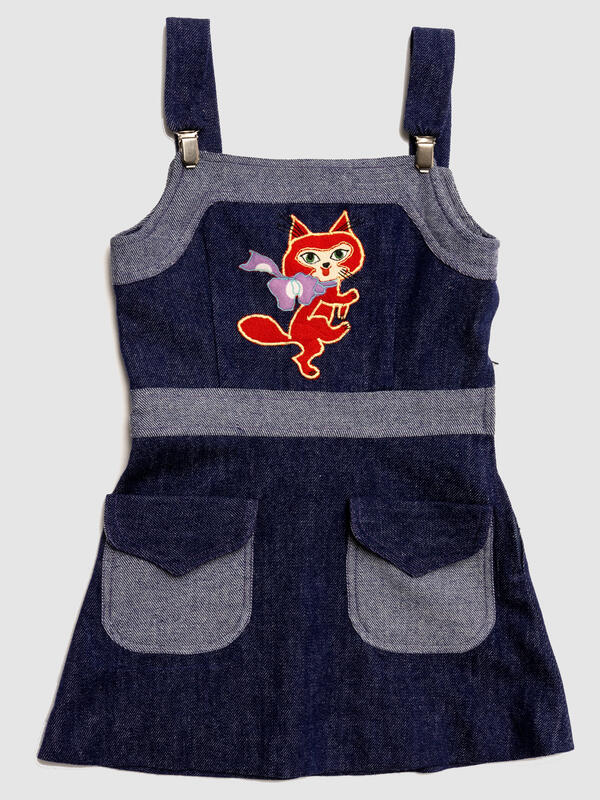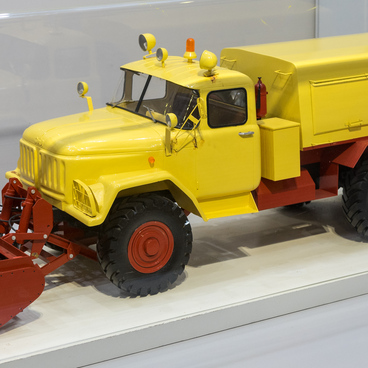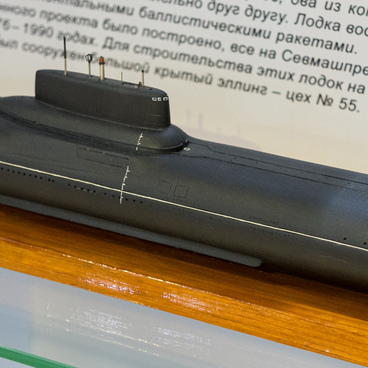A children’s denim sundress with a bright applique in the shape of a kitten was sewn at the Severodvinsk consumer services plant in the late 1970s, during the All-Union Leninist communist subbotnik. It was in the second half of the 1970s that a fashion for jeans began in the country — young people dreamed of them, they were brought from abroad and bought for a lot of money by those who could afford it. And Soviet weaving factories gradually began to produce cotton fabric, very similar to the denim of foreign trousers. The material appeared on the free market infrequently, but it came to light industry enterprises in sufficient quantities — things for children and adults were sewn from it.
The 1970s–1980s were characterized by an increase in the welfare of Severodvinsk residents: the average salary of townspeople in 1970 was 173 rubles, in 1980 — already 293 rubles, and those working at Sevmash 255 rubles and 366 rubles, respectively, which was twice the average wage in the USSR. It was during this period that personal interests and dreams came to the fore, ‘Apartment, dacha, car’ — this set became the new ideal of consumption of the Soviet person. During these decades, the demand for industrial goods, expensive furniture, household appliances, and luxury goods had grown.
Despite the improved supply of Severodvinsk as a closed city, common consumer goods were often in short supply. In this regard, it was decided to expand the production of this type of goods in the city, at local industrial enterprises. Since 1952, such industries like a furniture factory, a meat-packing plant, a bakery, a dairy plant, and a greenhouse farm began to appear here. They tried to provide the residents of the city with all the necessary products.
City enterprises were small in size and mainly provided for the needs of the local population. A garment factory, a knitwear factory, a consumer services factory, various small ateliers that produced outerwear and light clothing for the townspeople worked in the light industry.
The 1970s–1980s were characterized by an increase in the welfare of Severodvinsk residents: the average salary of townspeople in 1970 was 173 rubles, in 1980 — already 293 rubles, and those working at Sevmash 255 rubles and 366 rubles, respectively, which was twice the average wage in the USSR. It was during this period that personal interests and dreams came to the fore, ‘Apartment, dacha, car’ — this set became the new ideal of consumption of the Soviet person. During these decades, the demand for industrial goods, expensive furniture, household appliances, and luxury goods had grown.
Despite the improved supply of Severodvinsk as a closed city, common consumer goods were often in short supply. In this regard, it was decided to expand the production of this type of goods in the city, at local industrial enterprises. Since 1952, such industries like a furniture factory, a meat-packing plant, a bakery, a dairy plant, and a greenhouse farm began to appear here. They tried to provide the residents of the city with all the necessary products.
City enterprises were small in size and mainly provided for the needs of the local population. A garment factory, a knitwear factory, a consumer services factory, various small ateliers that produced outerwear and light clothing for the townspeople worked in the light industry.



